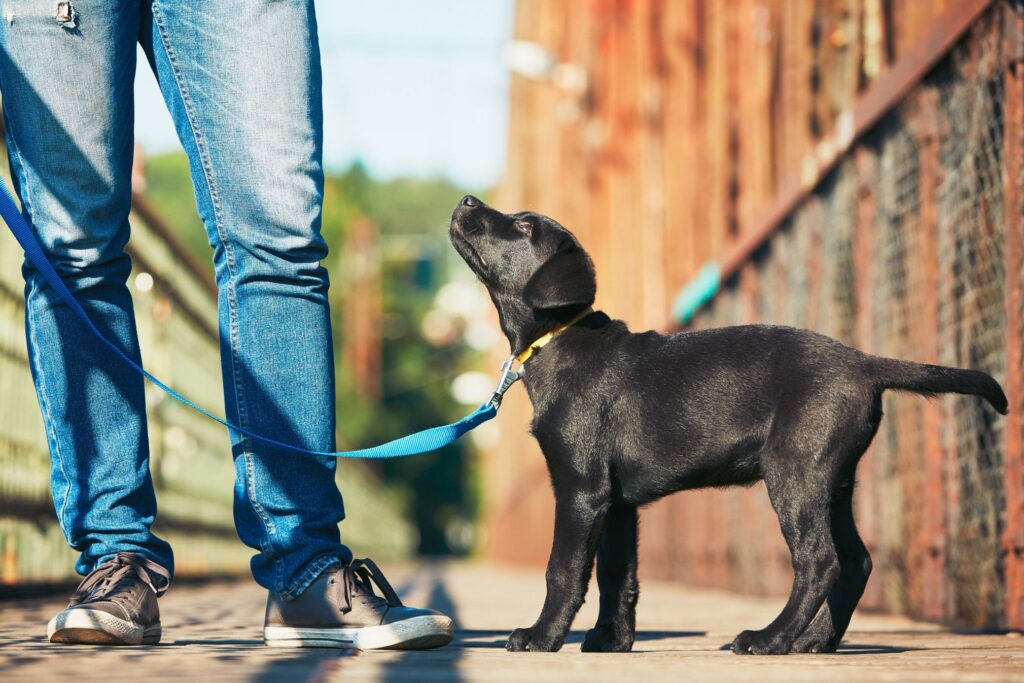Dog training is an essential aspect of responsible pet ownership, helping to ensure that your canine companion is well-behaved, obedient, and able to coexist harmoniously with both humans and other animals. Training your dog in household and outdoor etiquette not only enhances their safety and well-being but also strengthens the bond between you and your pet. In this article, we’ll explore some essential tips and techniques for teaching your dog proper etiquette both at home and in outdoor settings.
1. Start Early
The key to successful dog training is to start early and be consistent. Begin training your dog as soon as you bring them home, ideally when they are still a puppy. Puppies are like sponges, eager to learn and eager to please, making them more receptive to training and behavior modification. By establishing clear rules and expectations from the start, you can prevent unwanted behaviors from developing and set the foundation for a well-behaved adult dog.
2. Use Positive Reinforcement

Positive reinforcement is the most effective and humane method of dog training, rewarding desired behaviors with praise, treats, or other rewards. When your dog exhibits a desired behavior, such as sitting calmly or coming when called, immediately praise them and offer a treat or toy as a reward. Positive reinforcement helps reinforce the behavior you want to encourage and strengthens the bond between you and your dog. Avoid using punishment or harsh correction techniques, as these can damage the trust and relationship between you and your pet.
3. Teach Basic Commands
Teaching your dog basic commands such as sit, stay, come, and heel is essential for their safety and your peace of mind. Start with one command at a time, using positive reinforcement and repetition to reinforce the desired behavior. Be patient and consistent, practicing the command in different environments and gradually increasing the level of difficulty as your dog becomes more proficient. Consistency is key to success, so be sure to use the same cues and gestures each time you give a command.
4. Establish Boundaries
Establishing clear boundaries and rules for your dog helps prevent unwanted behaviors and promotes a harmonious living environment. For example, teach your dog to wait patiently at doorways before entering or exiting, to refrain from jumping on furniture or people, and to avoid begging for food at the table. Consistently enforce these boundaries with gentle reminders and positive reinforcement, and be patient as your dog learns to respect the rules of the household.
5. Socialize Your Dog
Socialization is an essential aspect of dog training, exposing your dog to a variety of people, animals, and environments from an early age. Socialization helps your dog develop confidence, adaptability, and good manners in different situations, reducing the risk of fear, anxiety, and aggression later in life. Take your dog for walks in different neighborhoods, introduce them to friendly dogs and people, and expose them to various sights, sounds, and smells to help them become well-rounded and well-adjusted companions.
6. Practice Leash Etiquette
Proper leash etiquette is crucial for both your dog’s safety and the safety of others when walking in public spaces. Teach your dog to walk calmly on a loose leash without pulling, lunging, or dragging you along. Use positive reinforcement to reward your dog for walking politely by your side, and gently correct any pulling or disobedience with a quick redirection or gentle tug on the leash. Consider using a front-clip harness or head halter to discourage pulling and encourage better leash manners.
7. Address Problem Behaviors

If your dog exhibits problem behaviors such as barking, chewing, digging, or aggression, it’s essential to address these issues promptly and effectively. Identify the underlying cause of the behavior, whether it’s boredom, anxiety, fear, or lack of training, and work with a professional dog trainer or behaviorist to develop a customized training plan. Avoid punishment or harsh correction techniques, as these can exacerbate the problem and damage the bond between you and your dog. Instead, focus on positive reinforcement and behavior modification techniques to encourage more appropriate behaviors.
8. Be Patient and Consistent
Above all, be patient and consistent in your training efforts with your dog. Rome wasn’t built in a day, and neither is a well-trained dog. Training takes time, effort, and dedication, so be prepared to invest the necessary time and energy into teaching your dog proper etiquette. Celebrate small victories and progress along the way, and don’t be discouraged by setbacks or challenges. Remember that every dog learns at their own pace, and with patience, persistence, and positive reinforcement, you can help your dog become a well-behaved and well-adjusted member of the family.
Training your dog in household and outdoor etiquette is essential for their safety, well-being, and the harmony of your household. By starting early, using positive reinforcement, teaching basic commands, establishing boundaries, socializing your dog, practicing leash etiquette, addressing problem behaviors, and being patient and consistent, you can help your dog develop the skills, manners, and behavior needed to be a well-behaved and obedient companion. With time, effort, and dedication, you and your dog can enjoy many happy years together, both at home and in outdoor settings.

